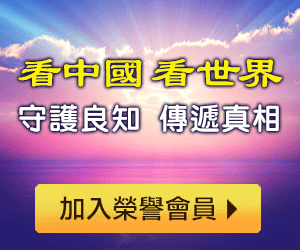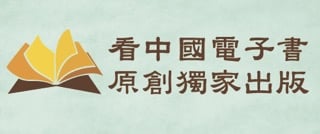本文從聽力的環節入手與大家分享新託福聽力的「三斑」(即:新託福聽力的形式、內容和出題原則),目的只在「拋個磚,引個玉」,勢未能引領大家觀「全豹」 仍期望借過「拋磚泛起的水花,望穿其神秘的面紗」。在波退水平之際,你會發現:新託福聽力--道是有變卻無變……
一、形式上
共六篇,平均每篇600字左右,5分鐘讀完。前兩篇:對話(conversations); 後四篇:課堂演講(lectures)
這是新託福中變化最大的一點。不過這種形式上的變化無論是在89年或在95年都有過類似的發生。所以這種屢見不鮮的變革對於我們來說是無足輕重的。因為無論是單句變對話,還是對話加段子,事實上我們都能很快地適應並取得令ETS髮指的成績。
那麼,這次的形式上取消了小對話,加長了長段子,增大了信息量,但無論怎樣,勢必會:來之、安之、定之……
二、內容上
1.對話內容(共三種):
(1) instructors』 office hours
對話人物為教授與學生。對話地點在教授辦公室。對話內容可為學術討論或有關詢問課程等問題。例如:要求教授延期交作業(此為非學術討論);要求教授解釋講座內容(此為學術討論)
(2) service encounters
對話人物為學生與工作人員。對話地點在校園某辦公室。對話內容為非學術的詢問。例如:詢問房租;怎樣註冊、怎樣選課等
(3) student interactions
對話人物為學生甲乙。對話地點為教室以外相遇。對話內容可為學術討論(一門專業課程內容、準備演講);非學術討論(借筆記、實習感受)
通過查對以上新對話部分的內容,不難發現三種對話的內容都是舊託福PartB 部分的頻繁測試點,無論是選課、註冊、找房、借筆記、交作業等等這些都可以歸結到以上三種新託福對話內容上。只是這裡更系統的做了一些分類。一句話:萬變不離其宗。
2.演講內容:
演講皆摘錄於真實的課堂演示。有的是教授獨白;有的是教授演講中夾雜學生提問、教授提問。這種演講的內容同舊託福段子PartC 的內容都是一樣的。天文,地理,生物,歷史等等也都是舊託福慣用的測試內容。一句話:黔驢只待技窮。
綜上,既然在內容上對話部分和演講部分都與舊託福如出一轍,那麼我們現在備考的最有效的材料,還是來源於舊託福的段子。而需要我們格外注意的只是平時訓練一些技能(主要為拓展聽記的存儲空間)去適應它的形式上的不同而已。
三、出題原則上:
[原則一] basic comprehension(50%以上的題目)
此類題型要求考生理解全文主要觀點(understand important main ideas)和支撐觀點的具體細節(supporting details)。
細分為兩種:
(1)A main idea(gist) question requires the listener to understand critical vocabulary 、phrases or facts from several points in a text and to interpret them or synthesize them to identify the key points of the text 問文章談論的主題(gist question)。這就需要考生有基本的概括主題以及從上下文提示中概括的能力。
(2) Detail questions require the listener to understand and remember explicit details or facts that are important as an explanation or an example of the main idea 問文章細節(detail question)。需要考生理解並存儲文中圍繞主題而陳述的重要事實
基本問法舉例(以ETS官方給出的兩套樣題為準):
(1)what problem does the man have?(此為細節理解)
(2)what are the students mainly discussing?(此為主題理解)
(3)what is the main topic of the talk?(此為主題理解)
樣題問法舉例(以ETS官方給出的兩套樣題為準)
(一)問主題(gist question)
What is the lecture mainly about?
What is the talk mainly about?
What is the main topic of the lecture?
What is the main purpose of the lecture?
What is the professor mainly discussing?
(二) 基本理解後問細節(detail question)
1、According 類
(1)According to the professor, where might there be a conflict in an organizational structure based on both projects and function?
(2)According to the conversation, why are transposons sometimes called 「jumping genes」?
(3)According to the conversation ,what are two ways in which bacteria cells get resistance genes?
(4)According to the professor, what information should the student include in her statement of purpose?
(5)Based on information in the lecture, indicate whether the statements below about human emotion reflect beliefs held by Plato.
(6)According to the professor, what are two problems associated with removing water from an underground system?
2、Why 類
(1) Why does the student go to see the professor?
(2) Why does the professor talk about Plato』s description of society?
(3) Why does the professor explain Bode』s Law to the class?
(4) Why does the man go to see his professor?
(5) According to the professor, why did one scientist grow a rye plant in water?
[原則二]Pragmatic understanding (25%左右的題目)
此類題型主要考察考生對語言交流的實際掌握能力。聽出講話者講某句話的目的(purpose);聽出講話者所呈現的態度(stance)
細分為兩種:
(1)Purpose understanding tests understanding of the intended function of an utterance, that is, the speaker』s purpose. Examples of functions include such speech acts as apologizing, describing, and suggesting.
問目的(purpose)是從不同角度去測試考生對語言功能的實際把握能力。需要考生能直接概括出講話人的目的,並確定講話人的感情基調是如何強調的。
(2)Stance understanding tests understanding of a speaker』s attitude. There are Two kinds of stance questions: attitudinal stance and epistemic stance. Attitudinal stance (attitude) questions generally probe the student』s understanding of speaker affect, for example, like, dislike, anxiety, and amusement. Epistemic stance questions probe the student』s recognition of the degree of doubt or certainty that the speaker expresses, whether his statements are intended as fact or opinion.
問態度(stance)要求考生根據講話者所言確定講話者的態度或立場。這是在basic understanding 的基礎上對字裡行間的一種理解能力的考察。
真題舉例:
Examples of ways that students can demonstrate understanding of the function of an utterance
(一)問目的(Purpose)--Directly identify the function of the utterance, i.e, the speaker』s purpose
以下材料摘錄於部分對話,對話雙方針對房租問題展開討論。
(Excerpt from a conversation between a male student and a female housing office secretary. They are discussing his dorm fees.)
(narrator) listen again to a part of the conversation. Then answer the question.
(Secretary) But let me ask you this, are you um in a single room or a double room?
(Student) I』m in a double
(Secretary) You』re rooming with someone?
(Student) Oh, I should』ve been--nobody was assigned though, but yeah it』s open, it』s available.
(Secretary) OK, because they』re charging you for a double, I mean for a single. They』re charging for the whole room. Um
(narrator) Why does the secretary say this: They』re charging you for a double, I mean for a single. They』re charging you for the whole room.
(A) To apologize for her mistake
(B) To explain why the problem happened
(C) To warn the man about future payments
(D) To suggest that the man find a roommate
Examples of ways that students can demonstrate understanding of the speaker』s stance
(二)問態度(stance)--Identify a paraphrase of a speaker』s utterance that expresses or implies the speaker』s stance
以下材料摘錄於教授與學員的對話
(Excerpt from a conversation between a female professor and a male student. They have been discussing what material will be included on an upcoming test)
(Narrator) Listen again to a part of the conversation. Then you will be asked to select the statement that is closest in meaning to what the man says.
(Professor) You』ll do fine on this if you』ve read and --underlined and thought about the important issues. But I want you to be sure that you understand from the beginning, um…what if means to ask you to do this. Cause this is where you could go wrong if you interpret this too simplistically…um…「identify」 means what?
(Student) You mean, like, who said what, right?
(Professor) Yes…and the title of this story, its author…
(Student) [worried, sounding somewhat indignant] So we』ve got to know all that stuff-for all the stories?
(Narrator) Select the sentence that best expresses how the student probably feels.
(A) 「I』m worried about remembering so much information.」
(B) 「I appreciate your taking the time to explain this to me.」
(C) 「I』m relieved to be learning about what will be on the rest.」
(D) 「I don』t understand what you mean.」
問法舉例:
基本問法舉例(以ETS官方給出的兩套樣題為準):
(1)Listen again to part of the lecture, then answer the question
(2)Why does the woman say this:……
樣題問法舉例(以ETS官方給出的兩套樣題為準):
(1)Why does the professor tell a story about his friend who went medical school?
(2)Why does the man talk to the woman about the 「Poetry Kitchen」?
(3)What is the woman』s attitude toward participating in the poetry club?
(4)What is the professor』s opinion of the motor theory of thinking?
[原則三]Connecting information(25%左右的題目)
此類題型考察考生對上下文以及文章脈絡、前後語言信息關聯的掌握的能力。這種考察就要求考生更具備一定的聽力實力,比如整合文中信息、根據前文下結論更會考到做推導的能力。總體上考察考生概括和推論的能力。
再細分為兩種:
(1)Organization questions
(2)Content questions
(1) Organization questions: question about the organizational aspects of the text may require students to identify the structure of the text. These questions ask students to identify the organization or rhetorical structure of the text or a portion of the text.
基本問法舉例:
(問) How does the professor organize the information that she presents to the class?
(答)In the order in which the events occurred.
(問) How does the professor clarify the points he makes about Mexico?
(答) By comparing Mexico to a neighboring country
(2) Content questions: Some content questions require students to demonstrate understanding of the substantive relationships between or among ideas in a text. Tasks of this type typically require students to identify relationships that either are explicitly presented in a stimulus or are clearly inferable. The task might ask students to respond to or organize information in a different manner from the way the information was presented to them in the stimulus. Some content questions require students to link content (i. e Explicit and/or implicit information) in order to perform an action. Task of this type will in some instances presuppose recognition of a particular relationship, but they will always require students to perform some action on information. These action include predicting outcomes, drawing conclusions or logical inferences, drawing accurate generalizations, extrapolating inferring a cause and effect relationship, specifying a sequence of events, and so on.
(注) 文章關聯信息類原則不考察學生對對話主題的概括。只是考察根據上下句去概括,去推理的能力。
真題舉例:
(Student) There』re a couple of people that』re interviewing me and one of the guys really liked me. He and I just hit it off perfectly and then the-girl-the woman who I』d probably be working for, she didn』t much care for me for some reason. Hmm, so I was wondering……
(professor)You want……
(Student) …about a recommendation…
(professor)It』s not too late?
(Student) They said, 「Drop it off this week.」
(professor)This week. Ok.
(student) Yeah. The thing is…it』s pretty competitive so any help I can get(professor)I』m glad to do what I can, no problem
(student) Great.
(Narrator) What does the student want the professor to do?
(A) Talk to his supervisor
(B) Help him prepare for another interview
(C) Write a letter of recommendation
(D) Offer him a job
基本問法舉例(以ETS官方給出的兩套樣題為準):
(1) What is the likely outcome of doing procedure 1 before procedure 2?
(2) What can be inferred about X?
(3) What does the professor imply about X?
樣題問法舉例(以ETS官方給出的兩套樣題為準):
(1)What will the students do in the summer?
(2)Why does the professor mention the Golden Gate Bridge?
(3)How does the professor introduce Bode』s Law?
(4)The professor describes a magic trick to the class, what does the magic trick demonstrate?
(5)The professor mentions houseplants that receive too much water, why does mention them?
(6)Indicate whether each sentence below describes functional organization or project organization
綜合以上新託福的形式、內容以及出題原則,正是我們所看到的ETS的科學性之所在。ETS任意的一項測試或一次改動,都是遵從著科學規律的。而我們都知道科學的產生發展都是建立在為人類服務的基礎之上的。科學的變是為了迎合人類的變;科學的進步是為了適應人類的進步。注重科學的美國人,無論是在其國內本科升學考試恆定尺的SAT考試05年的變化上;抑或即將推出的衡定非英語母語國家人英語水平的TOEFL變臉上;更或早在03年美國研究生入學測試的 GRE加試作文上,都是因為固有的考試不再能科學的分析人的必備能力後才「改易的旗幟」。
那麼,無論是何種考試,無論是何等變化,我們只需牢記一點:考試的本質是科學。抓住考試本質上的科學性方可擁有解決它的「破竹之勢」。它的形式是科學的,它的內容是科學的,它的出題途路是科學的,無論從哪裡著手,你是否已經蓄「勢」待發?
- 關鍵字搜索:
- 新東
看完那這篇文章覺得













排序